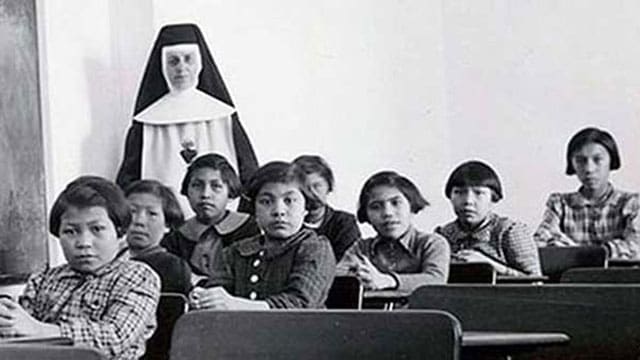The Kamloops residential school scandal unravels if we simply look through the archived records

For interview requests, click here
The second and third anniversaries of the shocking announcement made by the Tk’emlúps te Secwépemc Indigenous band in Kamloops, B.C., have passed almost unnoticed, despite the global headlines the news initially generated.
On May 27, 2021, the band announced the discovery of what were believed to be the remains of 215 children at the site of a former Indian Residential School (IRS). At the time, the band stated, “We have more questions than answers,” yet today, even more questions remain unanswered:
- Why was so much weight given to the inconclusive ground-penetrating radar (GPR) results?
- Why are new GPR searches planned when details of the previous search remain undisclosed?
- Why was GPR prioritized over more reliable archival records?
- Why has the site still not been excavated despite 14 families in the community calling for immediate action?
- Why has only one reporter investigated the site in person?
- Why were the potentially fallible spiritual “knowings” of Indigenous knowledge keepers given precedence over historical death records from school, church, and public archives?
- Why has band leadership now referred to the 215 “remains” as “anomalies” – unexplained soil disturbances – rather than confirmed graves?
 |
| Recommended |
| Why is Trudeau sticking to the unmarked graves hoax?
|
| Catholic Church finally repudiates the Doctrine of Discovery
|
| House of Commons finally describes residential schools as genocide
|
These questions have yet to be addressed by the Kamloops band or other involved parties.
One of the biggest questions, however, remains: Who, if anyone, is buried in the Kamloops IRS apple orchard?
The National Centre for Truth and Reconciliation (NCTR) maintains records of children who died while attending residential schools, though the cause of death and burial location are often unknown. However, independent research has shown that 49 of the 51 students listed as missing from Kamloops were actually buried in known cemeteries on their home reserves.
It’s possible the remains could belong to individuals who died before the school opened in 1890, as there are many abandoned graves across B.C. However, there has not been a single verified case of homicide at any Indian Residential School in Canada’s history.
The accusation that 215 children were secretly buried in the orchard at night defies basic logic. The school is located just across the river from the city of Kamloops. It seems highly unlikely that such a large-scale burial could have occurred unnoticed by both the city and the surrounding Indigenous community.
A far more likely explanation is that the GPR probe detected the remains of animals, decaying tree stumps, or buried construction debris rather than the remains of 215 secretly buried children.
Rather than continuing to spend time and public funds on inconclusive GPR searches, most of the so-called missing could likely be located through carefully preserved school, church, and government records. However, this would require genuine interest from the relevant parties – the NCTR, Indigenous activists, band leaders, journalists, scholars, and family members – in uncovering the truth.
Hymie Rubenstein, editor of REAL Indigenous Report, is a retired professor of anthropology, University of Manitoba. He is co-author of Residential School Recrimination, Repentance, and Reality for the Frontier Centre for Public Policy, where he is a senior fellow.
Explore more on Residential schools
The opinions expressed by our columnists and contributors are theirs alone and do not inherently or expressly reflect the views of our publication.
Troy Media
Troy Media is an editorial content provider to media outlets and its own hosted community news outlets across Canada.

